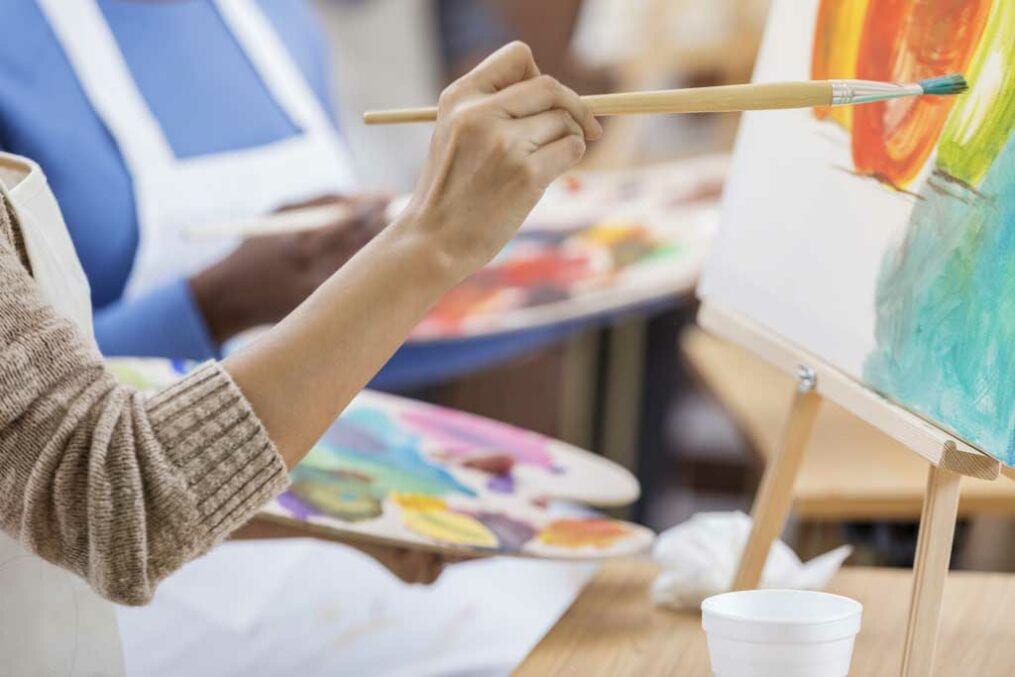
Art therapy is based on the idea that you can work through your feelings and emotions by undertaking creative practice. Inspired by psychoanalysis and the importance of the subject’s internal world, one of art therapy’s early pioneers was Austrian-born Edith Kramer, an astute follower of Sigmund Freud. She used his theory of ‘sublimation’ (the idea that we transform socially unacceptable impulses into acceptable behaviours as a defence mechanism), and believed that ‘art tells the truth’. Kramer was employed as an art therapist in a school in 1950 and her seminal text, Art as Therapy with Children, was published in 1971.
Today, art therapy is available for children and adults. It’s still seen as a type of psychotherapy, but it’s influenced by a range of theories. Meditation-based practices have hit the mainstream in the form of colouring books, but therapy sessions can also help subjects explore feelings of compassion and social engagement.
What’s involved?
You can have art therapy in groups or individually, and sessions might involve drawing, painting, collaging, crafting and even using electronic devices such as iPads. You don’t need prior experience to get involved, but you might be asked to talk about your work afterwards.
Art therapy sessions can be offered by charities, hospitals, therapy centres, or day centres. They might be helpful for people with a range of issues including chronic or life-limiting diseases, mental health problems and relationship problems. Guidelines set out by the National Institute for Health and Care Excellence (NICE) recommend it’s considered for people who suffer from psychosis and schizophrenia. If you want to try it, make sure your therapist is registered with the Health and Care Professions Council (HCPC), as anyone who refers to themselves as an art therapist should be.
What are the benefits?
For people who struggle to talk about their feelings, or have communication difficulties, art therapy can be used as an alternative to talking therapy. This means it might be useful for people with learning difficulties, offering a means to communicate visually. Additionally, the creative process itself can help to give participants a feeling of purpose and a sense of achievement that might improve overall wellbeing.
Any science behind it?
There’s been little conclusive research – to date, most of art therapy’s perceived benefits come from anecdotal evidence or small-scale studies. However, the research that exists has had promising results, particularly in treating children with mental health issues and for reducing feelings of depression in adults.
Treating PTSD
A pilot study looked at the effects of art therapy on children and teens with PTSD. Patients from two New York hospitals took part in 16 creative sessions over two weeks. The activities included beading, making mosaics and stitching purses. Participants also made collages and drawings to express their life stories. They were encouraged to display their work to their peers and discuss feelings relating to their trauma. Despite being encouraged to revisit traumatic memories, the group who took part in the art therapy displayed fewer behavioural problems and a decrease in PTSD symptoms, compared to a control group. However, more studies are needed to assess the long-term effects.
Cancer patients
In a 2017 comparative study, cancer patients took part in watercolour painting during their chemotherapy sessions, and were given materials for home practice. Afterwards, participants assessed their depression and anxiety levels. The patients who took part in the art therapy showed significant improvement in quality of life, compared to a control group. However, this was a relatively small study.
Fertility struggles
A 2011 pilot study investigated the use of art therapy as a mental health intervention for 21 women struggling to conceive. Participants showed reduced feelings of hopelessness, depression and anxiety. Again, this was a small study, but the results suggest art therapy might be a meaningful way to improve emotional wellbeing.
The post Should I try art therapy? appeared first on Healthy Magazine | Food | Fitness | Beauty | Health.

No comments:
Post a Comment